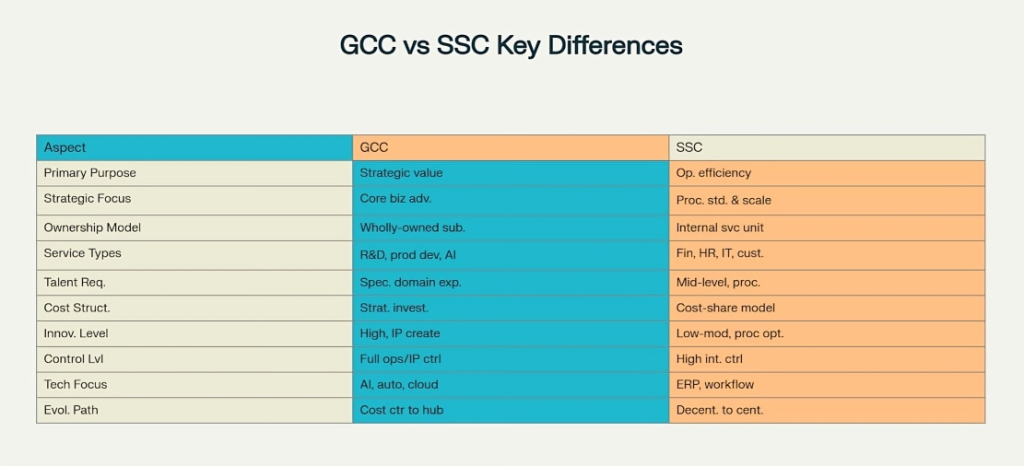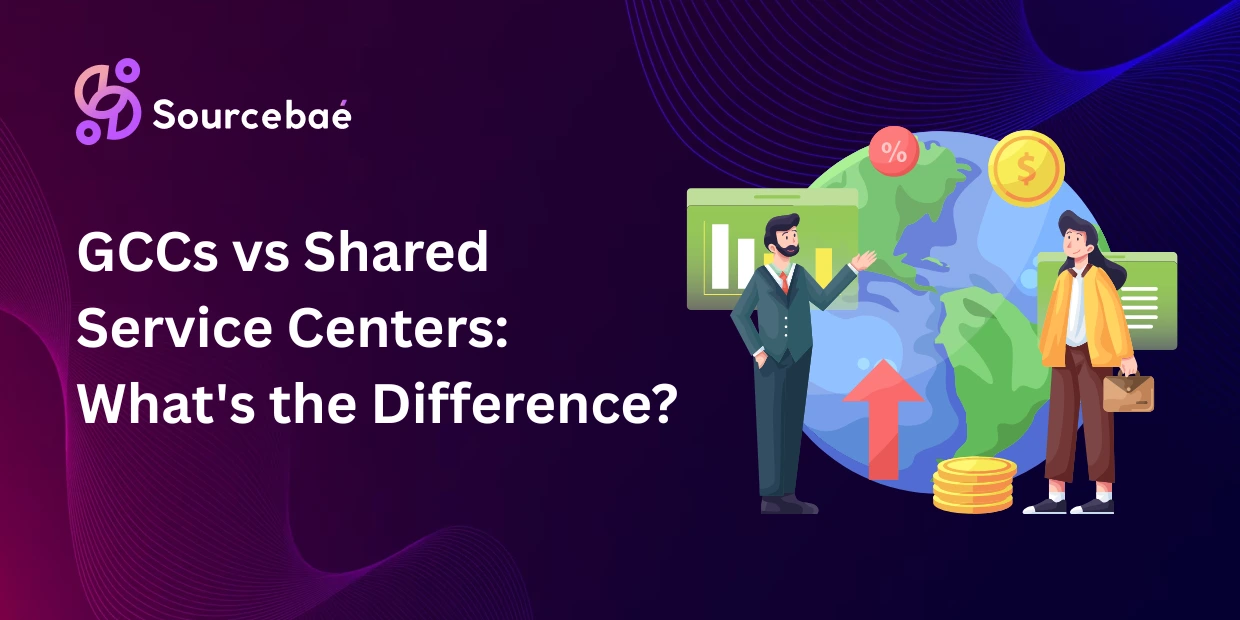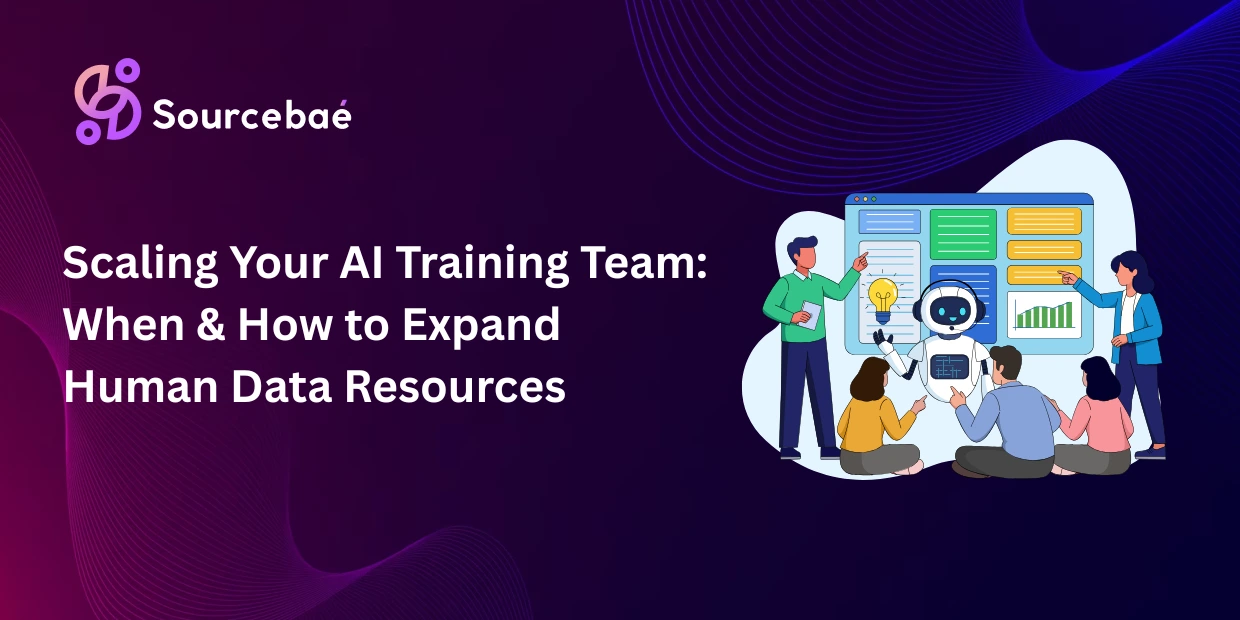In today’s globalized business environment, organizations are constantly seeking ways to optimize operations, reduce costs, and drive innovation. Two prominent organizational models have emerged as strategic solutions: Global Capability Centers (GCCs) vs Shared Service Centers (SSCs). While both models aim to enhance efficiency and leverage global talent, they serve fundamentally different purposes and operate with distinct strategic objectives.

Comprehensive comparison between Global Capability Centers (GCCs) and Shared Service Centers (SSCs) across key operational and strategic dimensions
Understanding Global Capability Centers (GCCs)
Global Capability Centers represent a strategic evolution from traditional cost-cutting initiatives to value-creating powerhouses. GCCs are wholly-owned, integrated facilities strategically located in talent-rich regions, designed to create substantial value and develop proprietary intellectual property through collaborative, distributed teams.
Initially established primarily for cost arbitrage, GCCs have undergone a remarkable transformation over the past two decades. What began as simple back-office operations focused on routine tasks like IT support and customer service has evolved into sophisticated hubs driving innovation, digital transformation, and strategic business capabilities.
Key Characteristics of GCCs
Strategic Value Creation: Modern GCCs are involved in complex functions such as digital transformation, innovation management, and strategic sourcing. They serve as centers of excellence, providing specialized expertise and best practices that enhance organizational performance across various domains.
Complete Ownership and Control: Unlike outsourcing arrangements, GCCs allow full control over intellectual property and core capabilities. This internal alignment results in better integration with global strategies and long-term value creation.
High-Value Functions: GCCs typically handle advanced functions including research and development, product design, data analytics, artificial intelligence, machine learning, and digital transformation initiatives.
Talent Requirements: These centers require highly specialized talent, including domain experts, senior professionals, and individuals with cutting-edge technical skills.
Understanding Shared Service Centers (SSCs)
Shared Service Centers are specialized units within an organization dedicated to providing centralized support services to various business units or departments. The primary objective of SSCs is to consolidate specific functions into a centralized hub, eliminating redundancies and promoting standardized processes.
SSCs operate on the principle of economies of scale, bundling significant transaction volumes to improve efficiency while leveraging labor arbitrage by moving activities from high-cost locations to medium or low-cost regions.
Key Characteristics of SSCs
Operational Efficiency Focus: SSCs centralize transactional and repetitive tasks from different business units into a single entity, with the primary purpose being to standardize processes, reduce costs, and enhance operational efficiency.
Process Standardization: These centers consolidate routine, transactional processes across business units or geographies into a single, centralized unit, focusing on operational efficiency through standardization, automation, and cost reduction.
Service Functions: Common functions managed through SSCs include finance and accounting, human resources, IT support, procurement, customer service, and other back-office operations.
Talent Composition: SSCs typically employ mid-level professionals with process-oriented skills, focusing on executing standardized procedures rather than strategic innovation.
Strategic Differences and Evolution Paths
Evolution and Maturity
GCC Evolution: GCCs have transformed from being primarily cost-saving entities to becoming strategic assets that contribute directly to core business objectives. This evolution has been driven by increasing complexity of global business operations and the fast pace of technological change.
SSC Maturity Model: SSCs typically progress through defined maturity stages, from start-up phase focusing on basic cost center operations to advanced phases where they become profit centers with comprehensive service level agreements and sophisticated governance structures.
Control and Governance Models
GCC Governance: Traditional GCC models operate as wholly-owned captive centers that provide requisite services directly to their headquarters organization. They maintain complete control over operations, intellectual property, and strategic decision-making.
SSC Governance: SSC governance models feature clear roles and responsibilities for stakeholders, including SSC leadership, service providers, customers, and oversight committees. The governance structure considers the organization’s size, culture, operating model, and risk profile.
Technology and Innovation Focus
GCC Technology Strategy: GCCs leverage cutting-edge technologies such as artificial intelligence, machine learning, cloud computing, and intelligent automation to enhance operational resilience, boost performance, and encourage innovation. They serve as ideal testing environments for emerging technologies.
SSC Technology Implementation: SSCs focus on process automation, ERP systems, workflow tools, and standardized technology solutions that support transactional efficiency and process optimization.
Purpose and Strategic Intent
Shared Services Center (SSC):
Primarily designed to centralize support functions and cut costs through process consolidation and standardization. The SSC model emerged in the early 1990s when companies began setting up offshore hubs to manage transactional tasks—mainly finance, HR, and procurement.
Goal: Efficiency, accuracy, and consistency.
Example: A multinational CPG firm consolidating payroll processing for APAC in a Malaysia SSC to reduce overhead costs and maintain compliance.
Global Capability Center (GCC):
A modern evolution of the SSC, the GCC goes beyond operational support to act as a strategic growth driver. These centers take ownership of critical capabilities like product development, analytics, engineering, and even customer experience.
Goal: Innovation, value creation, and long-term capability building.
Example: Walmart’s tech GCC in Bangalore is involved in building global supply chain solutions—not just providing IT support.
Functional Scope
SSC:
Handles routine and repetitive business processes:
- Invoice processing
- Payroll and benefits
- IT support desk
- Procurement administration
- Data entry and records
These are governed by Service Level Agreements (SLAs) to maintain performance.
GCC:
Owns end-to-end delivery of strategic, technical, and analytical functions:
- Product design and software development
- Data science and ML model deployment
- Cybersecurity operations
- Customer journey analytics
- Cloud infrastructure management
GCCs are deeply embedded in product and business teams and may lead innovation roadmaps.
Innovation Capability
SSC:
Innovation is process-oriented—focused on improving existing workflows through automation (e.g., using RPA for invoice matching). However, there’s limited investment in high-end technology or experimentation.
GCC:
GCCs are hotbeds for innovation. Many companies leverage their GCCs as Centers of Excellence (CoEs) to:
- Build AI/ML solutions
- Pilot blockchain use cases
- Run product sprints and prototyping
- Lead cloud modernization initiatives
Case Study: Target India’s GCC has pioneered several app features for its US market.
Talent Profile and Hiring Strategy
SSC:
Recruitment is volume-driven, with a focus on hiring graduates for transactional roles. Training is standardized, and job mobility is often limited. SSCs often face higher attrition due to lack of growth paths.
GCC:
Talent acquisition in GCCs is specialized and competitive. These centers attract:
- Senior developers and data engineers
- Product managers and UX researchers
- AI/ML experts
- DevOps and platform engineers
They collaborate with IITs, IIITs, and global universities and focus on retention through skilling, ownership, and career growth.
Ownership, Governance, and Decision-Making
SSC:
Controlled tightly by the headquarters. They follow fixed SOPs and compliance protocols, with little flexibility or innovation autonomy. Decision-making is centralized.
GCC:
GCCs are often empowered to:
- Build roadmaps
- Manage budgets
- Drive internal transformation
Some GCCs operate as independent business units with their own P&L responsibilities and have CXOs or VPs leading the charge from offshore locations.
Example: Pepsico’s Hyderabad GCC acts as a digital innovation hub with end-to-end delivery ownership.
Technology Stack
SSC:
Typically runs on legacy enterprise systems like SAP, Oracle, Workday, and simple workflow tools. Technology adoption is reactive and based on HQ mandates.
GCC:
Built with a modern cloud-first architecture, GCCs adopt:
- AWS, GCP, Azure
- Kubernetes, Docker, Jenkins
- Apache Spark, Kafka
- GenAI tools, LangChain, TensorFlow
GCCs often drive cloud migration and digital transformation agendas for their global counterparts.
Performance Metrics and KPIs
SSC KPIs:
- Cost per transaction
- SLA adherence
- Accuracy and error rates
- Response time
- Ticket resolution rate
The focus is on process efficiency and cost control.
GCC KPIs:
- Innovation throughput
- Time-to-market (TTM)
- Product adoption rate
- Code quality metrics
- Uptime and system performance
Here, performance is measured on value creation, speed, and agility.
Geographic Strategy
SSC:
Location decisions are driven by cost and compliance. SSCs are typically set up in regions with:
- Lower labor costs
- Tax incentives
- Minimal innovation infrastructure
Popular SSC hubs: Manila, Guadalajara, Bucharest, Tier-2 Indian cities.
GCC:
GCCs are located in talent-dense ecosystems—cities with access to premier institutes, global networks, startup culture, and tech infrastructure.
Popular GCC hubs:
- Bangalore, Hyderabad, Pune (India)
- Krakow (Poland)
- Tel Aviv (Israel)
- Toronto (Canada)
These cities provide access to AI talent, R&D partnerships, and innovation networks.
Integration with Core Business Units
SSC:
Acts as a backend service provider. Communication is often one-way, with little visibility into overall strategy or product roadmaps.
GCC:
Functions as an extension of HQ, participating in:
- Agile product development sprints
- Global leadership calls
- Cross-functional pods
- Strategic roadmap planning
GCCs often co-own OKRs and share accountability for key results.
Scalability and Long-Term Evolution
SSC:
Scales with volume, but hits a ceiling due to automation or outsourcing. There’s limited scope for transformation unless the function is upgraded to a GCC model.
Limitation: Beyond a certain point, SSCs may be seen as replaceable.
GCC:
Designed for long-term strategic scalability. They evolve into:
- Product R&D centers
- Global innovation hubs
- AI/ML Centers of Excellence
- Cloud infrastructure leaders
Future Path: Many GCCs grow into global leadership and product headquarters for select business functions.
Summary Table: SSC vs GCC
| Category | Shared Services Center (SSC) | Global Capability Center (GCC) |
|---|---|---|
| Primary Purpose | Cost efficiency and process consolidation | Innovation, digital capability, strategic growth |
| Core Functions | Finance, HR, Procurement | Product, Engineering, AI, Analytics |
| Talent Strategy | Standard roles, volume hiring | Specialized talent, strategic roles |
| Tech Stack | ERP, legacy systems | Cloud-native, AI/ML, modern dev stacks |
| KPIs | SLA compliance, TAT, cost | Innovation velocity, TTM, business impact |
| Ownership | Centralized governance | Decentralized, high autonomy |
| Geographic Focus | Cost-effective regions | Talent-rich innovation hubs |
| Business Integration | Transactional, siloed | Deeply embedded, collaborative |
| Scalability | Volume-based, automation-bound | Innovation-based, exponential |
| Evolution Path | Limited – may stagnate | Dynamic – can become global innovation HQs |
Market Trends & Future Outlook
- According to NASSCOM, India alone houses over 1,600+ GCCs and the number is expected to surpass 2,000 by 2026.
- GCCs are projected to contribute $100B+ to India’s economy by 2030.
- Companies like JPMorgan, Microsoft, Atlassian, Walmart, and Goldman Sachs are shifting from SSC to GCC models to future-proof operations.
Bottom Line:
While SSCs were built for a cost-centric past, GCCs are architected for a growth-centric future.
Implementation Considerations and Timelines
GCC Setup Process
Setting up a GCC typically spans 6 to 8 months from initial decision to operational readiness. The process involves strategic planning and feasibility studies, location selection, legal and financial setup, infrastructure development, and talent acquisition.
Key phases include:
- Strategic planning and feasibility study (1-2 months)
- Location selection and business case development (1-2 months)
- Legal and financial setup (1-2 months)
- Infrastructure and technology setup (1-2 months)
SSC Development Timeline
SSC implementation follows a more structured maturity progression, with most centers reaching their third development stage within 5-6 years of establishment. The maturity model encompasses four phases: Start-up, Growth, Expansion, and Second Generation SSC.
Business Impact and ROI Considerations
GCC Value Proposition
GCCs deliver value through enhanced competitiveness, increased agility, and operational efficiency5. By executing complex projects and developing advanced technologies, GCCs enhance the competitiveness of their parent organizations and provide competitive advantages in global markets.
The value created by GCCs extends beyond cost savings to include improved operational efficiency, enhanced product offerings, and increased market share. Companies utilizing GCC models report significant benefits including access to diverse global talent pools, enhanced operational control, and improved collaboration across global teams.
SSC Benefits
SSCs provide cost reduction, process standardization, improved compliance, and enhanced focus on core business functions. Organizations implementing shared services can achieve significant cost savings through elimination of duplicated efforts, reduced overhead, and improved resource utilization.
The scalable nature of SSCs allows organizations to efficiently accommodate growth or changes in business demands without extensive restructuring. By centralizing services, organizations achieve economies of scale and ensure consistent service delivery across multiple business units.
Choosing the Right Model
The decision between implementing a GCC or SSC depends on several strategic factors:
When to Choose GCC:
- Organizations seeking strategic innovation and competitive differentiation
- Companies requiring control over intellectual property and core capabilities
- Businesses focusing on high-value functions like R&D, analytics, and digital transformation
- Enterprises with long-term strategic objectives and substantial investment capacity
When to Choose SSC:
- Organizations prioritizing operational efficiency and cost reduction
- Companies needing to standardize transactional processes across multiple business units
- Businesses seeking quick wins in process consolidation and economies of scale
- Enterprises focusing on back-office functions and support services
Conclusion
While both GCCs and SSCs serve important roles in modern business operations, they represent fundamentally different approaches to organizational efficiency and value creation. SSCs excel in operational efficiency and cost reduction through process standardization, while GCCs drive strategic value creation through innovation and high-value capabilities.
The future of global business operations increasingly points toward integrated models that leverage both approaches strategically. Organizations that master this balance will not only achieve operational efficiency but also maintain competitive advantages through continuous innovation and strategic capability development.
As businesses continue to evolve in an increasingly complex global landscape, the choice between GCCs and SSCs—or the integration of both models—will remain a critical strategic decision that can significantly impact organizational success and competitive positioning.
FAQS
Which is better for digital transformation—SSC or GCC?
GCCs are better suited for digital transformation as they are built to drive innovation, adopt modern technology stacks, and contribute directly to product and business outcomes. SSCs are optimized for operational efficiency, not transformation.
What functions are typically handled by an SSC?
Common functions managed by SSCs include:
- Payroll and benefits administration
- Accounts payable/receivable
- Customer service/helpdesk
- Vendor management
- Reporting and compliance
These tasks are process-heavy and governed by SLAs.
What roles do GCCs typically hire for?
GCCs hire high-skill talent across domains such as:
- Full-stack and backend developers
- Data scientists and AI/ML engineers
- Cybersecurity experts
- DevOps and cloud architects
- Product managers and UX designers
GCC hiring focuses on strategic and technical expertise.
Can a Shared Services Center evolve into a GCC?
Yes. Many organizations begin with an SSC to handle basic operations and later transition it into a GCC by adding capabilities such as analytics, automation, and development. This evolution depends on business vision, investment, and talent strategy.
Why are companies shifting from SSCs to GCCs?
Companies are shifting due to:
- The need for faster innovation
- Access to global high-tech talent
- A desire to co-own product and tech outcomes
- The limits of cost-saving strategies alone
GCCs offer agility, innovation, and long-term scalability that SSCs cannot provide.
What are examples of companies with GCCs?
Top companies with active GCCs include:
- Microsoft (India) – leading product development
- Walmart Global Tech – global retail tech innovation
- Goldman Sachs – finance analytics and RPA
- PepsiCo – digital innovation and data science
- Target – mobile app and ecommerce engineering
Are GCCs costlier to set up than SSCs?
Initially, yes—GCCs require higher investment in skilled talent, infrastructure, and leadership. However, the ROI is higher in the long run as they contribute to product growth, innovation velocity, and competitive advantage.






